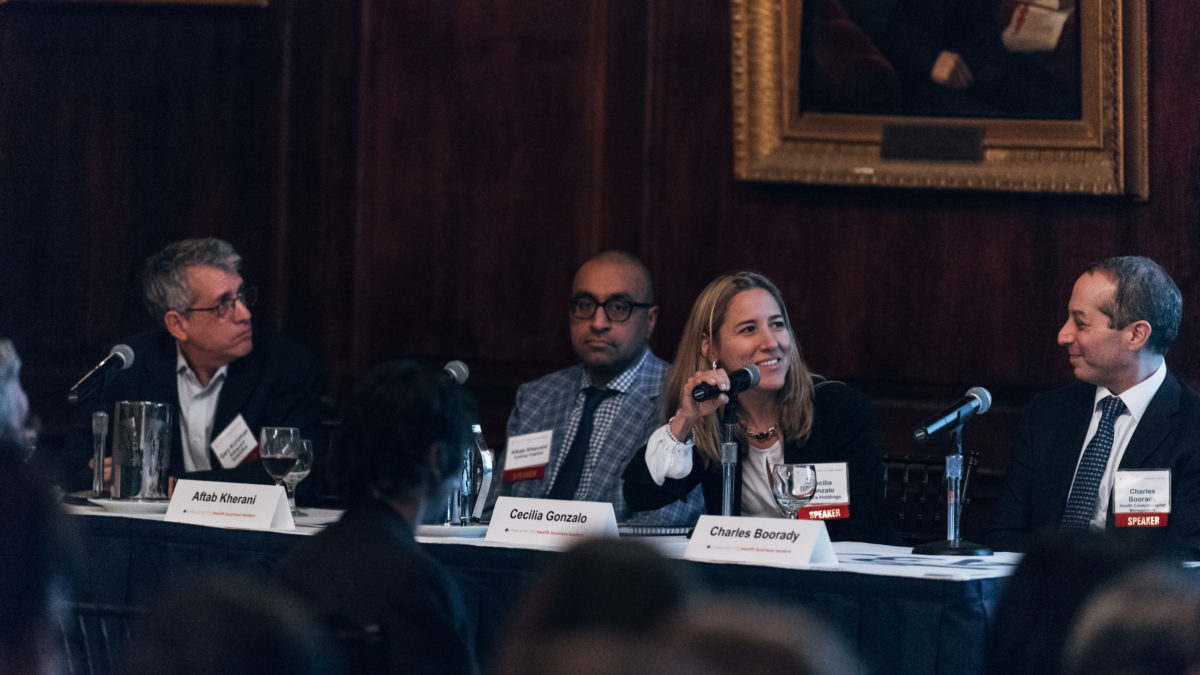

Cecilia Gonzalo of Vatera Holdings discusses biopharma trends.
Last month, New York City Health Business Leaders gathered to discuss “Health Investment Trends: Where will the Money Flow in 2017?” The event was sponsored by Grassi & Co. and was held at the Union League Club. Bunny Ellerin, president of NYC Health Business Leaders, and Joseph Tomaino, principal of Grassi & Co., moderated the discussion.
Panelists included:
- Charles Boorady, Founding Managing Director, Health Catalyst Capital Management
- Cecilia Gonzalo, Managing Director, Vatera Holdings
- Aftab Kherani, Partner, Aisling Capital
- Gary Kurtzman, Managing Director, Safeguard Scientifics
Peter Levinson, principal of LevinsonBlock, shared his summary of the event with us:
“Healthcare investment trends 2017
Here are some ideas that stood out during the panel discussion. Please note this is my completely unofficial point of view, and may not reflect what the panelists intended.
- Overall, there is a continuing multi-year trend of steady investment in both biopharma and healthcare IT. But there is volatility in the public markets over valuation of healthcare businesses, most likely due to uncertainty about the Affordable Care Act (ACA).
- What are private investors watching in 2017? Well, they are not particularly concerned about the proposed dismantling of the ACA. More important to them is increased public and political scrutiny of prescription drug prices, and the continued trend towards value based payments.
Healthcare IT roadblocks
Besides biopharma, panelists discussed healthcare IT, a sector with multiple issues:
- It sometimes takes more than a decade to implement research results in clinical practice. So patients may not be getting the best care based on the most current research. Why? One reason is the fragmented state of healthcare electronic health records (EHR). The sector is composed of competing proprietary systems that don’t readily share patient data. This impedes both research and adaptation of best practices.
- Today’s EHRs use outmoded code and primitive UX. And the mandate for meaningful use of EHRs had a downside: providers have installed an entire generation of outdated systems.
- EHR improvements take the form of middleware – applications that add connectivity by sitting on top of an EHR. Typically, middleware is designed to solve specific problems, such as managing a chain of referrals. But they are, at best, a band aid over the systemic technology problems in healthcare.
- So when will this situation improve? Panelists expect the next generation of EHRs to arrive in 10 – 20 years.”
Peter Levinson is Principal of LevinsonBlock, a Brooklyn-based healthcare marketing firm that specializes in mid-sized organizations. Click here to subscribe to Brandscape, Peter’s twice-monthly newsletter on healthcare marketing.
